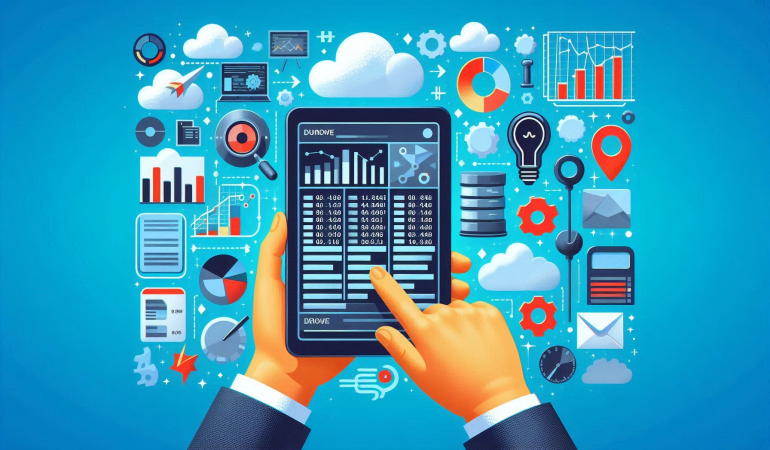
Using Power BI for Time Series Decomposition: Trend, Seasonality, and Noise.
Jul 16, 2024
Using Power BI for Time Series Decomposition: Trend,
Seasonality, and Noise.
In today’s blog post, I’ll guide you through the
steps to create a time series forecasting model in Power BI. Let’s dive in and
see how you can easily predict future trends and values for a more
insightful analysis.
Introduction
Time
series analysis is a powerful technique used to analyze data points collected
or recorded at specific time intervals. In the context of costing, it can help
businesses understand and forecast expenses over time, identify trends, and
make informed decisions. Power BI, a leading business analytics tool, offers
robust features for performing time series analysis.
1. Understanding Time Series Analysis
Before
diving into the technical steps, it’s important to understand what time series
analysis entails. It involves:
- Trend
Analysis: Identifying the general direction in which
data is moving over a long period.
- Seasonality:
Detecting patterns that repeat at regular intervals.
- Forecasting:
Predicting future values based on historical data.
2. Preparing Your Data
To start,
ensure your data is clean and formatted correctly. Your dataset should include:
- Date/Time
column: This should be in a date-time format.
- Cost
values: The financial figures you want to analyze.
Example
dataset:
Date | Cost
--------------|------
2023-01-01 | 500
2023-02-01 | 450
2023-03-01 | 480
...
3. Loading Data into Power BI
- Open
Power BI Desktop.
- Click
on "Get Data" and select your data source (e.g., Excel, SQL Server).
- Load
your dataset into Power BI.
4. Creating a Date Table
A Date
table is essential for time intelligence functions.
<!--[if !supportLists]-->1. <!--[endif]-->Go to the
"Model" view.
<!--[if !supportLists]-->2. <!--[endif]-->Click on
"New Table" and enter the following DAX formula to create a Date
table:
DAX
DateTable
= CALENDAR(MIN('YourTable'[Date]), MAX('YourTable'[Date]))
- Add
necessary columns like Year, Month, Quarter:
DAX
Year =
YEAR(DateTable[Date])
Month =
FORMAT(DateTable[Date], "MMMM")
Quarter =
"Q" & QUARTER(DateTable[Date])
5. Building the Time Series Visualization
<!--[if !supportLists]-->1. <!--[endif]-->Go to the
"Report" view.
<!--[if !supportLists]-->2. <!--[endif]-->Insert a
Line Chart.
<!--[if !supportLists]-->3. <!--[endif]-->Drag the
Date column from your Date table to the X-axis.
<!--[if !supportLists]-->4. <!--[endif]-->Drag the
Cost column to the Y-axis.
6. Adding Trend Lines and Forecasting
<!--[if !supportLists]-->1. <!--[endif]-->Select
your Line Chart.
<!--[if !supportLists]-->2. <!--[endif]-->Go to the
"Analytics" pane.
<!--[if !supportLists]-->3. <!--[endif]-->Add a
"Trend Line" to observe the general direction of your costs over
time.
<!--[if !supportLists]-->4. <!--[endif]-->For
forecasting, add a "Forecast" and set the desired period (e.g.,
months, years).
<!--[if !supportLists]-->5. <!--[endif]-->Adjust
the confidence interval and seasonality settings as needed.
7. Enhancing Your Analysis with DAX
Leverage
DAX (Data Analysis Expressions) to perform more advanced calculations and
enhance your analysis.
- Moving
Average:
DAX
Moving
Average = AVERAGEX(DATESINPERIOD(DateTable[Date], LASTDATE(DateTable[Date]),
-3, MONTH), [Cost])
- Year-over-Year
(YoY) Growth:
DAX
YoY
Growth =
VAR
PreviousYearCost = CALCULATE(SUM('YourTable'[Cost]), DATEADD(DateTable[Date],
-1, YEAR))
RETURN
DIVIDE(SUM('YourTable'[Cost]) - PreviousYearCost, PreviousYearCost)
8. Interpreting Results
- Identify
Trends: Observe the trend line to understand the
general movement of your costs.
- Detect
Seasonality: Look for repeating patterns in your data.
- Make
Forecasts: Use the forecast feature to predict future
costs and plan accordingly.
9. Conclusion
Time
series analysis in Power BI provides a comprehensive view of cost trends and
forecasts, helping businesses make data-driven decisions. By following this
guide, you can effectively analyze your costing data, identify patterns, and
forecast future expenses, enabling better financial planning and management.
For more detailed guidance and in-depth training, visit our training here.

